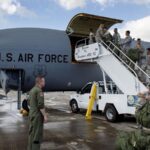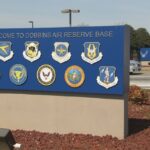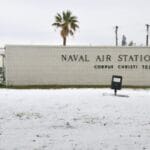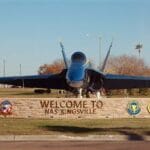Aviator Retention Bonus: Understanding Its Impact and Benefits

What is the Aviator Retention Bonus (ARB)?
Aviator retention bonuses, commonly referred to as Aviation Continuation Pay (ACP), are financial incentives offered to aviation officers who commit to remaining on operational flying duty for at least one year beyond their initial service obligation. These bonuses are specifically designed to retain skilled pilots and aircrew in critical roles. However, aviator retention bonuses are not available to those in the pay grade of O-7 or higher.
Eligibility and Application
To qualify for ACP, eligible officers must submit an application and meet their service branch’s specific criteria. The annual bonus amount varies based on the branch’s operational needs and the length of the officer’s extended service commitment. These bonuses are structured to provide competitive compensation, encouraging aviators to continue their military careers.
Maximum Aviator Retention Bonuses by Service Branch
| Service Branch | Maximum Annual Bonus |
|---|---|
| Army (Certain warrant officer pilots only) | Up to $25,000 per year |
| Air Force | Up to $50,000 per year |
| Navy | Up to $35,000 per year |
| Marine Corps | Up to $35,000 per year |
| Coast Guard | Up to $35,000 per year |
Additionally, some Unmanned Aerial Vehicle (UAV) or Remotely Piloted Aircraft (RPA) pilots may qualify for bonuses of up to $35,000 per year, reflecting the growing importance of these roles in modern military operations.
These incentives ensure the retention of experienced personnel critical to mission success, providing competitive compensation in a demanding and specialized field.
Eligibility for the Aviator Retention Bonus
Eligibility for ARB depends on various factors, including rank, years of service, and current aviation duties. Each military branch may have its specific requirements:
- Active-duty aviators who have completed their initial service obligation.
- Aviators holding a designated aviation specialty or rating.
- Commitment to an additional service obligation, typically ranging from three to six years.
- Meeting performance standards and physical fitness requirements.
ARB Payment Structures
The ARB is typically structured as either a lump sum payment or annual installments, allowing aviators to choose the option that best suits their financial needs. Here’s an example of the potential payment structure:
Sample ARB Payment Structures
| Service Commitment | Lump Sum Payment | Annual Installments |
|---|---|---|
| 3 Years | $75,000 | $25,000 |
| 4 Years | $100,000 | $25,000 |
| 5 Years | $125,000 | $25,000 |
| 6 Years | $150,000 | $25,000 |
These payments are subject to federal taxes unless the aviator serves in a combat zone, where certain income may become tax-exempt.
Why ARB is Critical
Retaining Expertise
Experienced aviators play a vital role in training new pilots and leading critical missions. Losing skilled personnel to commercial airlines could create significant gaps in military readiness.
Competitive Market
“The ARB bridges the gap between military compensation and lucrative offers from civilian airlines,” says retired Air Force Colonel Mark Jensen. This incentive allows the military to compete with the private sector.
Mission Continuity
With seasoned aviators, the military ensures uninterrupted operations and upholds its high standards of aviation safety and mission success.
Factors Influencing ARB Adoption Rates
Several factors affect an aviator’s decision to accept the ARB:
- Financial Incentives: Larger bonuses often lead to higher acceptance rates.
- Family Considerations: Stability and long-term benefits for dependents play a significant role.
- Career Opportunities: Aviators weigh potential growth within the military versus opportunities in civilian aviation.
- Operational Tempo: High-stress assignments may deter long-term commitments.
ARB Across Different Military Branches
While the ARB is consistent in its purpose across all branches, payment amounts and eligibility criteria may vary.
ARB Comparisons by Branch
| Branch | Maximum Bonus | Commitment Period | Eligibility Requirements |
|---|---|---|---|
| Air Force | $150,000 | 5 Years | Active aviators with critical skills |
| Navy | $125,000 | 4-6 Years | Aviators with specialized roles |
| Army | $100,000 | 3-6 Years | Rated aviators in active duty |
| Marine Corps | $120,000 | 4-6 Years | Pilots meeting operational needs |
| Coast Guard | $110,000 | 3-5 Years | Aviation specialists in specific areas |
Each branch tailors its ARB to address its unique operational challenges and retention goals.
Pros and Cons of the Aviator Retention Bonus
Pros:
- Financial Stability: Provides a significant financial boost during service.
- Career Development: Encourages extended service, leading to advanced training and leadership roles.
- Retention of Expertise: Maintains an experienced aviation force.
Cons:
- Longer Commitments: Extended service obligations may deter some aviators.
- Competitive Pressure: Bonuses may not always match lucrative civilian offers.
- Tax Implications: Bonuses are subject to federal taxes unless earned in tax-exempt zones.
Real-Life Stories
“I chose the ARB because I wanted to further my career and support my family,” shares Captain Rebecca Hayes, a Navy pilot. “The financial incentive allowed me to focus on my duties without worrying about my family’s future.”
Similarly, Air Force aviator Major Chris Daniels noted, “The ARB gave me the confidence to commit to another five years. It’s not just about the money; it’s about the opportunity to grow and lead.”
FAQs About the Aviator Retention Bonus
What is the purpose of the ARB?
The ARB incentivizes experienced aviators to extend their service, ensuring the military retains critical aviation expertise and operational readiness.
How is the ARB payment structured?
Aviators can choose between a lump sum or annual installments. The total amount depends on the commitment period and branch-specific guidelines.
Who is eligible for the ARB?
Eligibility varies by branch but generally includes active-duty aviators who have completed their initial service obligation and meet performance standards.
Is the ARB taxable?
Yes, ARB payments are subject to federal taxes. However, portions earned in combat zones may be tax-exempt.
Can aviators decline the ARB?
Yes, participation in the ARB is voluntary. Aviators can weigh their options and decide based on career and personal goals.
How does the ARB compare to civilian airline offers?
The ARB provides competitive financial incentives but also offers unique military benefits such as pension plans and healthcare.
Does accepting the ARB limit career options?
Accepting the ARB commits aviators to additional service, which may delay transitions to civilian careers but enhances military career opportunities.
How does the ARB impact operational readiness?
By retaining skilled aviators, the ARB ensures continuity in missions, training programs, and aviation safety.








